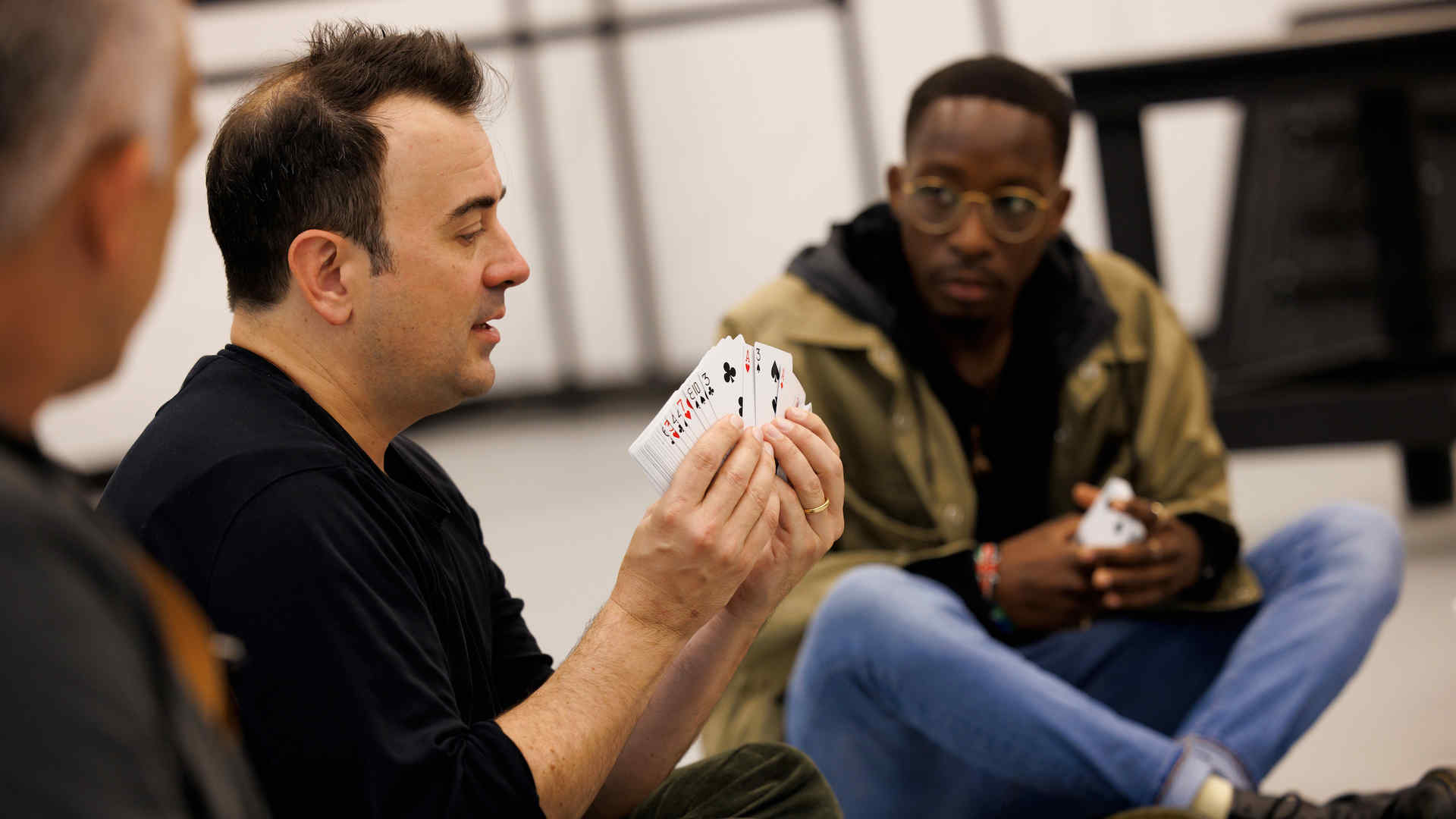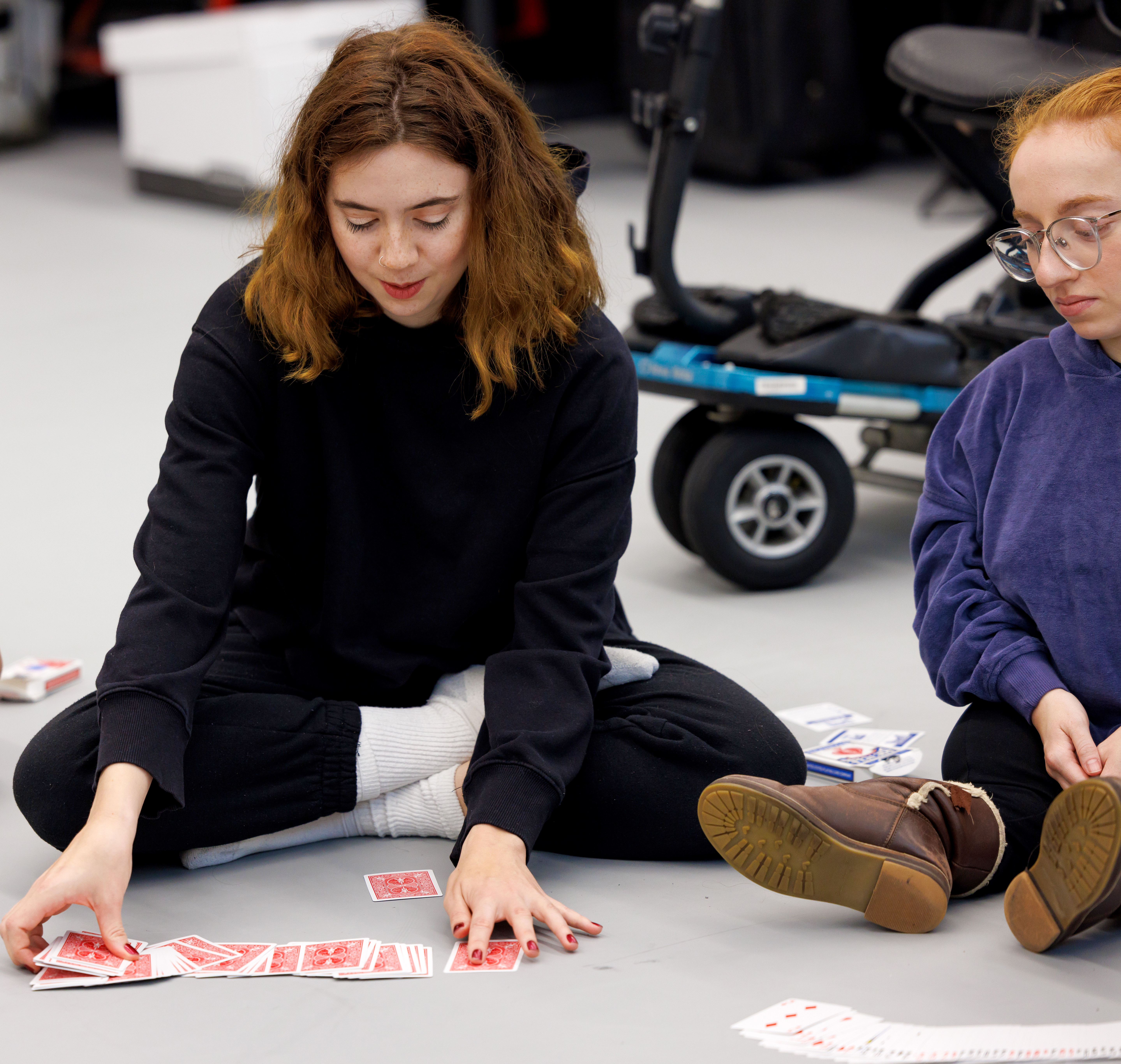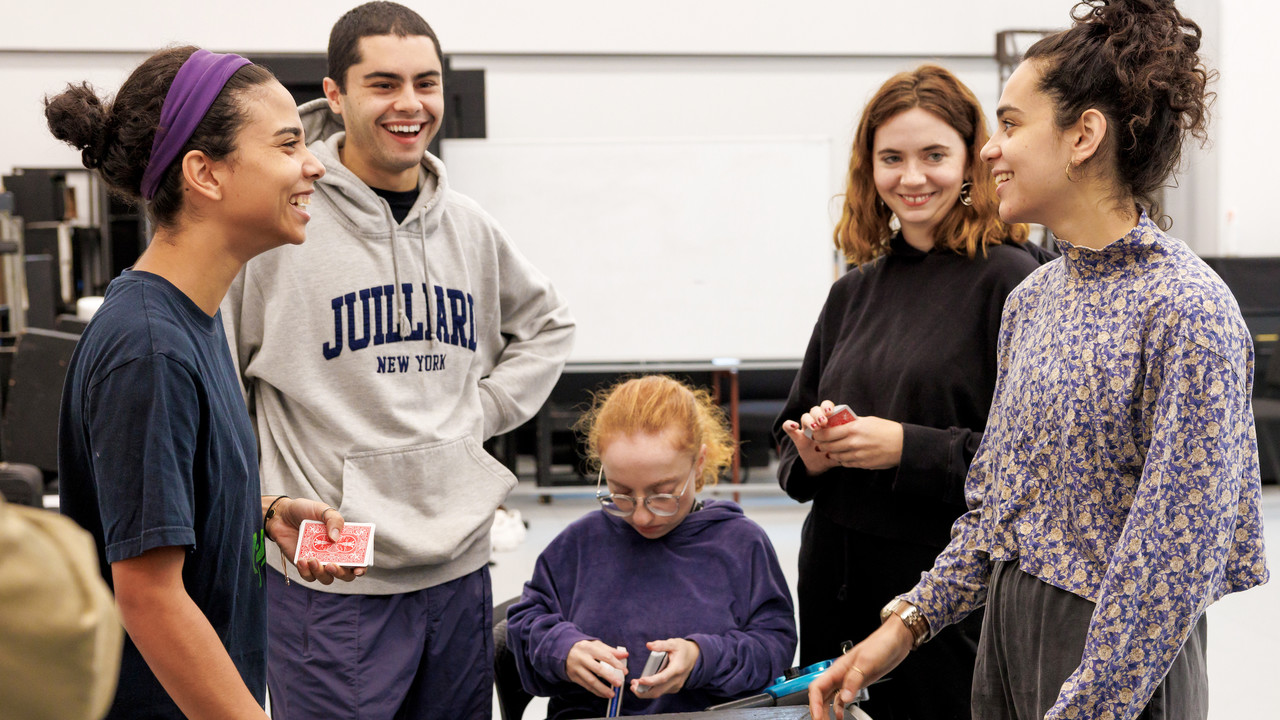
In the fall, the Drama Division welcomed theater artist, close-up magician, and illusion designer Steve Cuiffo to lead the third-year students in a multiweek workshop on illusions.
Cuiffo—whose work includes Lucas Hnath’s A Simulacrum (Atlantic Theater) and The Thin Place (Playwrights Horizons) as well as Geoff Sobelle’s Home and The Object Lesson (BAM)—was the magic consultant for season four of The Marvelous Mrs. Maisel and the magic director for David Blaine Live. At Juilliard, Cuiffo helped the students learn magic tricks and illusions, guiding them in technique, storytelling, and performance. Third-year actor Leela Bassuk reflected on her experience in the workshop.

By Leela Bassuk
Magic happens every day in the Juilliard Drama Division.
For example, the magical moment when a drama student manages to grab a bag of Cheetos at the vending machine during a 90-second bathroom break in the middle of Speech class. That’s “teleportation” in magic-speak.
So when our professor told us, “You won’t see me for a while—a magician will be here in my place,” none of my classmates batted an eye. Crazier things have happened here. I mean, we wear clown noses and corsets, we sword fight with spinal alignment, we weep and scream and laugh until we weep and scream and laugh again. And that’s just a Tuesday before 11am!
So on a cloudy fall morning, my classmates and I arrived in Room 301 and were greeted by our guest artist: illusionist Steve Cuiffo. I was ready for a purple cape and top hat but found Steve in jeans and a T-shirt. He immediately brought a welcoming, warm energy into the room. We sat on the floor in a circle, and he gave us an icebreaker: “What does magic mean to you?”
“Coin tricks!”
“Harry Potter!”
“The Devil ...”
Although each response was unique, we all associated magic with the whimsy and wonder of our childhood memories and experiences.
Then we began to introspect: Why had magic faded from our lives? How could it be that even we—open-minded actors-in-training—could feel so distant from this playful, delightful thing? What happened to us?
Then, Steve ripped a newspaper to shreds and immediately put it back together. Right in front of us. Within seconds.
You know the sound of a 6-year-old’s birthday party? A good one with pizza and a bouncy castle? That’s exactly what Room 301 sounded like after Steve destroyed and then seamlessly restored the newspaper.
We howled:
“How did he do it?”
“Are you kidding me? No. No. No. What?!”
“Tell us! Don’t tell us. Please tell us!”
Steve smiled and calmly folded the pristine newspaper.
“I’ll show you on Thursday,” he said.

Over the next three weeks, Steve shared the secrets of some of the fundamental techniques of close-up magic, making use of everyday objects such as rubber bands, napkins, coins, and playing cards. Steve taught us new techniques with great patience and generosity.
Once we had acquired the basic physical technique of a trick, Steve asked us to perform the trick individually for one another while incorporating an improvised narrative. As third-year Juilliard actors, this was a big moment to show off our storytelling abilities.
“Pick a card—any card—um—” we heard ourselves mumble with quivering breath and little regard for the person in front of us. We quickly discovered that pulling off the trick required total mastery of the physical technique as well as a confident and fluid improvised narrative.
Alakazam! Magic is acting, and acting is magic!
Both art forms have a physical and verbal component. Like a magician mastering the steps of a coin trick and incorporating a compelling narrative, an actor must discover the specificity of the physical life of the character in each scene, in addition to truthful embodiment of the text.
Inspired by Steve’s deep knowledge, mastery, and commitment to and love of his craft, we excitedly took our newly learned tricks back into the locker room after class, performing and perfecting them for our unsuspecting peers.
Every time we practiced a trick, we grew more confident. And a few times during these performances, we found ourselves entering that special place of ease and play that occasionally happens on stage. That place where it’s just you and the other person, and something unexpected and wonderful is about to happen.
Something magical!
Leela Bassuk is a third-year drama student